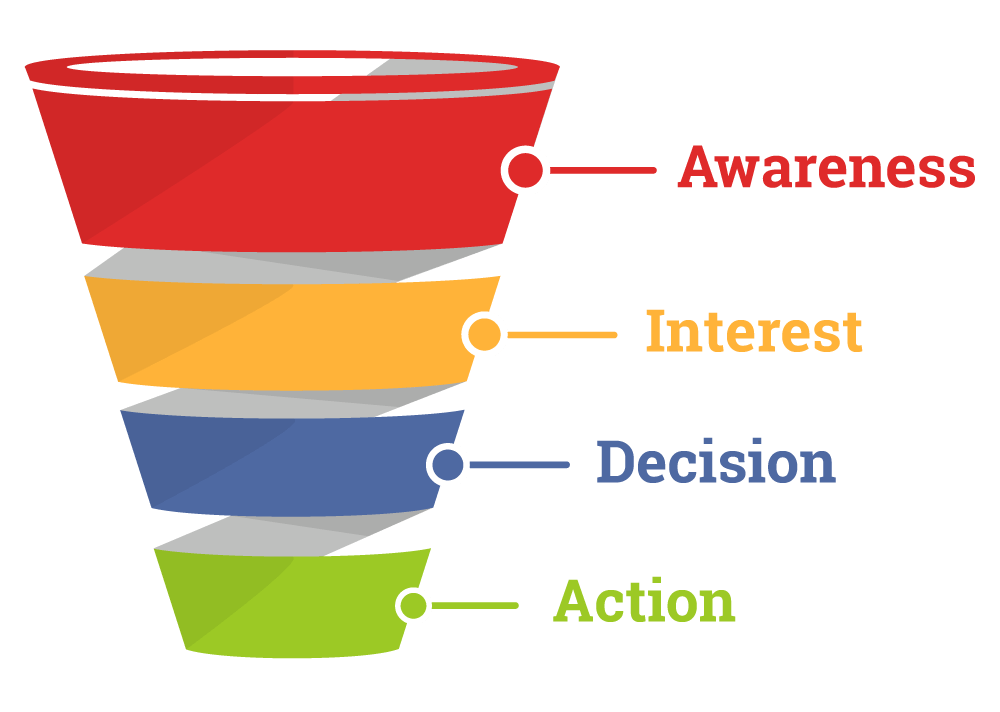What is a Sales Funnel?
A Sales Funnel is a visual representation of the journey customers go through from their first interaction with your brand to the final purchase in a SaaS environment.
Detailed Explanation
The Sales Funnel illustrates the phases of a customer’s journey with a SaaS company: Awareness, Interest, Decision, and Action. Each stage represents a different level of interaction with potential customers and plays a crucial role in converting prospects into paid users.

- Awareness: This is the top, or the widest part of the funnel. At this stage, potential customers discover your SaaS product, typically through marketing strategies such as SEO, PPC, content marketing, or social media. The goal here is to generate visibility and reach out to as many prospects as possible.
- Interest: As the funnel narrows down, prospects who are interested in your product begin to engage more. They might sign up for newsletters, follow your brand on social media, or download whitepapers. For a SaaS company, this could involve offering a free trial or demo of the product.
- Decision: At this stage, interested prospects are considering whether to make a purchase. To help them make a decision, SaaS businesses often provide in-depth product comparisons, testimonials, or case studies. Offering exclusive discounts or bonuses can also nudge potential customers towards purchase.
- Action: The final stage of the funnel, where a prospect becomes a customer. They commit to purchasing your SaaS product, thus completing the conversion process.
For instance, a SaaS company might create blog posts for the Awareness stage, offer free trials in the Interest stage, give product comparisons in the Decision stage, and offer discount codes for those ready to take action. Understanding these stages enables businesses to tailor their strategies and create a smoother path to purchase.
Why it Matters
Understanding and optimizing the Sales Funnel is vital for SaaS CEOs and CMOs as it aids in improving customer acquisition and retention. By identifying bottlenecks or leaky spots in the funnel, businesses can fine-tune their marketing and sales strategies, thus improving their conversion rates and revenue. This is where understanding the Customer Acquisition Cost (CAC) becomes crucial, as it helps in determining the investment required to acquire a new customer. Moreover, knowing the Customer Lifetime Value (CLV) can help businesses understand the total revenue they can expect from a customer over their lifetime, guiding them in making informed decisions about how much to invest in acquiring and retaining customers.
Optimizing the Sales Funnel with Proven Sales Tactics:
A well-structured sales funnel is the backbone of any successful SaaS business, guiding potential customers from awareness to conversion. However, the effectiveness of your sales funnel is directly influenced by the sales tactics you employ. For SaaS businesses looking to supercharge their sales funnel and boost revenue, our guide on “Sales: +17 Effective Tactics for SaaS Teams. Close More Deals & Boost Revenue” offers actionable insights. From understanding customer pain points to leveraging data analytics and refining your value proposition, these tactics ensure that every stage of your sales funnel is optimized for maximum conversions and revenue growth.
Potential Misunderstandings
A common misunderstanding about the Sales Funnel is that it’s a one-time, linear process. In reality, especially in SaaS, the customer journey can be cyclical, involving repeated purchases or subscriptions.
Frequently Asked Questions
- How can I optimize my SaaS Sales Funnel?
Start by identifying and addressing bottlenecks. For example, if many visitors sign up for a free trial but don’t purchase, focus on improving the trial-to-customer conversion rate. - Is a Sales Funnel still relevant for SaaS?
Yes, it is. However, SaaS businesses often use a recurring revenue model, which means the customer journey can be more cyclical compared to traditional businesses.
